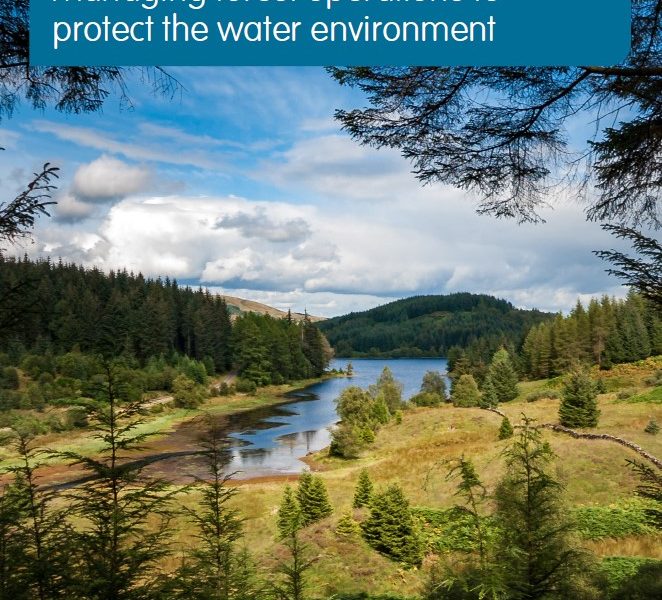We use some essential cookies to make this website work.
We’d like to set additional cookies to understand how you use forestresearch.gov.uk, remember your settings and improve our services.
We also use cookies set by other sites to help us deliver content from their services.

This Practice Guide provides advice to forest managers, practitioners, planners and supervisors, on how forest operations should be planned and managed to protect the water environment.
Wind damage is a serious threat to managed forests because it results in loss of timber yield, landscape quality and wildlife habitat. The most common form of wind damage in Britain is windthrow in which both stem and roots overturn. Prediction and prevention of wind damage have been important elements...
Forests and woodlands bring wide-ranging and diverse benefits to people in Scotland. They are ideal places for people of all ages to participate in leisure, recreation and sports. However, forests are also workplaces. Forestry is an important part of the rural economy, and the production of timber provides revenue for...
Potential means of creating new broadleaved woodlands
Our climate is changing rapidly, with milder, wetter winters, warmer summers, longer growing seasons and more frequent extreme conditions, including drought periods and heavy rainfall events. The projected rate of climate change is unprecedented and therefore action is essential now to improve the resilience of forests and woodlands, and to...
This Bulletin is primarily concerned with the management of resident populations of red deer in commercial forests, and gives practical prescriptions for deer management based upon sound data collection and scientific method. All such prescriptions must be aimed at particular, well-defined deer populations occupying discrete ranges. There is an important...
Atmospheric pollution in the form of acid deposition has been dramatically reduced since international controls on emissions were introduced in the 1980s. However, acidification still affects acid-sensitive regions of the UK, damaging fisheries and causing adverse ecological changes in freshwaters. Forestry is known to influence the degree of acidification, principally...
Carbon valuation, discounting and risk management are important in ensuring that effective incentives are put in place to tackle climate change, and in comparing the relative merits of climate mitigation activities over time. Approaches applied in different contexts, including in relation to permanence issues, are reviewed in order to help...
Publications about integrated management issues relevant across a wide range of forest operations with recommendations and best practice guidance.
How do we manage insect pests in British forestry? This PhD project aims to evaluate current science and practise and develop and test new and improved methods in order to enhance integrated pest management in the industry.
Flooding is a major environmental hazard facing the UK and one that is expected to increase with climate change. Societal impacts and economic damages are likely to escalate, with major floods already costing multiple £billion. These concerns are driving a more sustainable approach to flood risk management involving greater working...
Cookies are files saved on your phone, tablet or computer when you visit a website.
We use cookies to store information about how you use the dwi.gov.uk website, such as the pages you visit.
Find out more about cookies on forestresearch.gov.uk
We use 3 types of cookie. You can choose which cookies you're happy for us to use.
These essential cookies do things like remember your progress through a form. They always need to be on.
We use Google Analytics to measure how you use the website so we can improve it based on user needs. Google Analytics sets cookies that store anonymised information about: how you got to the site the pages you visit on forestresearch.gov.uk and how long you spend on each page what you click on while you're visiting the site
Some forestresearch.gov.uk pages may contain content from other sites, like YouTube or Flickr, which may set their own cookies. These sites are sometimes called ‘third party’ services. This tells us how many people are seeing the content and whether it’s useful.